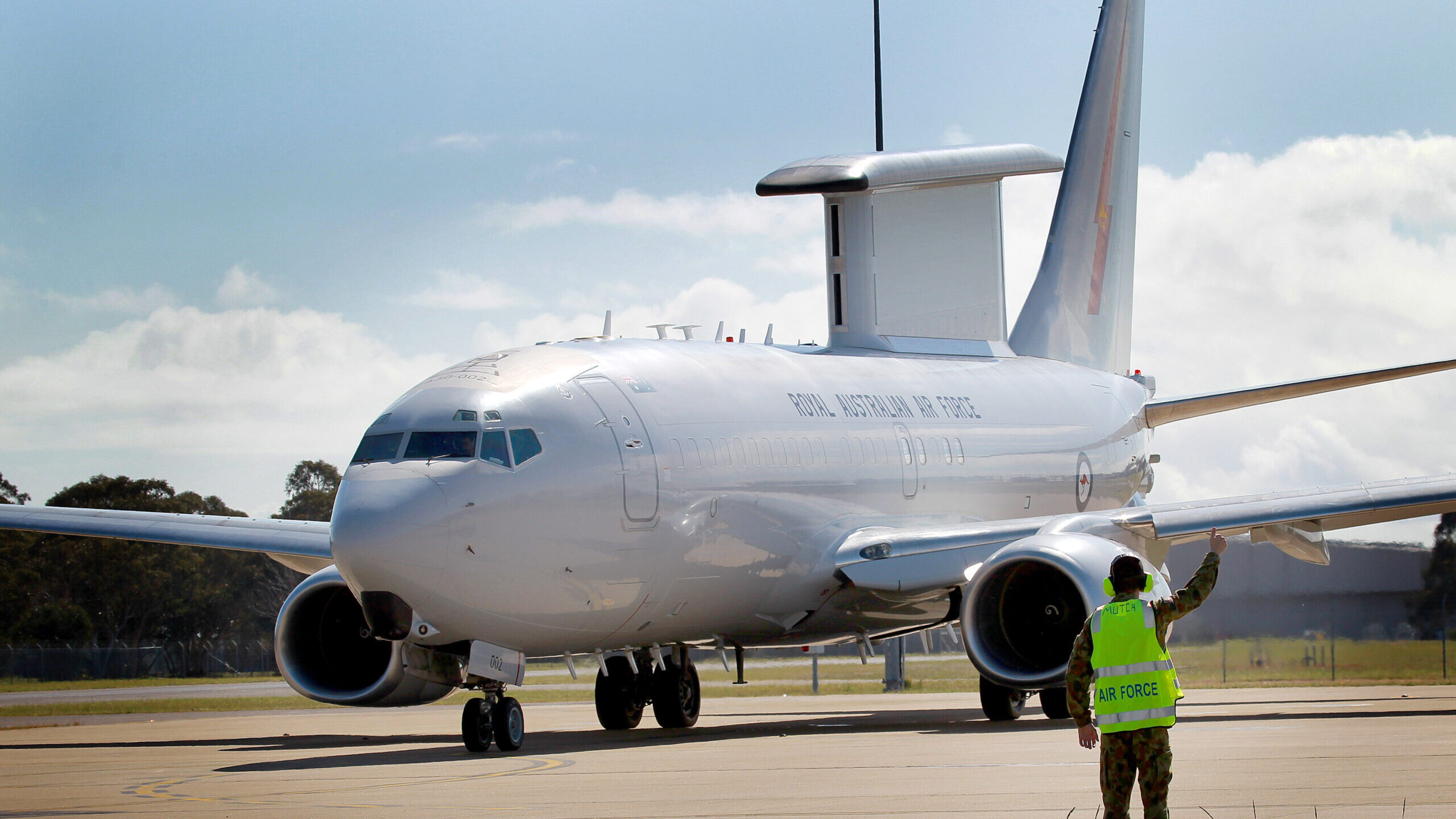
The E-7A Wedgetail Airborne Early Warning and Control aircraft departs for the Middle East from RAAF Base Williamtown on September 21, 2014 in Williamtown, Australia. (Cpl. Melina Young/Royal Australian Air Force via Getty Images)
DAYTON, Ohio — The Air Force is hedging its bets that Congress will pass a 2023 budget by the time the new fiscal year starts in October and has asked lawmakers take steps that will allow the service to award Boeing a contract for the E-7 Wedgetail even if the federal government is running on a continuing resolution, a service official said Wednesday.
Right now, the Air Force is hoping to sign a deal with Boeing for the E-7 in February 2023, said Steven Wert, who leads the service’s Program Executive Office Digital. However, over the past two decades, Congress has repeatedly failed to pass appropriations bills before Oct. 1, instead relying on continuing resolutions to avoid government shutdown.
Because a lengthy CR extending into next year would preclude the Air Force from starting work on new programs like E-7 — including cementing a contract on time — the program office has already requested relief from Congress that would increase its chances of awarding a contract by February, or potentially a little sooner.
“We currently have a ‘new-start, above the threshold reprogramming request’ working through the system, along with a CR anomaly as well. That is intended to provide us some flexibility, if approved,” Wert told reporters during a roundtable at the Air Force’s Life Cycle Industry Days conference. A “reprogramming” would permit the Air Force to move money for the E-7 program from fiscal 2023 to FY22, while the approval of an “anomaly” would allow the service to begin a new start program under a continuing resolution.
“That new start reprogramming would give us the flexibility to potentially speed it up somewhat,” he said. “It’s not going to be a dramatic speed up, but we’re doing everything we can.”
OP ED: If the Air Force buys the E-7A Wedgetail, what’s next?
Even if the Air Force ends up not getting the concessions it’s asking for, it’s still possible that the program office will be able to ink a contract with Boeing in February as long as lawmakers are able to pass a spending deal by then, Wert said.
“In most years, CR is resolved by that point,” said Wert, who added that the Air Force is “getting very good” at being able to sidestep budgetary challenges caused by yearly continuing resolutions.
In April, the Air Force announced its intent to buy the E-7 Wedgetail to replace its E-3 Sentry airborne warning and control system (AWACS) inventory, which is plagued with high sustainment costs and low availability rates due to the advanced age of the aircraft. The E-7 was developed by Boeing for the Royal Australian Air Force and is currently being acquired by the UK’s Royal Air Force.
The US Air Force plans to start the acquisition of the first US Wedgetail using the $227 million in development funding requested as part of the FY23 budget. A second prototype aircraft is planned to be funded in FY24, followed by a production decision in FY25.
Despite lawmakers’ support for fielding the aircraft as soon as possible, the first “rapid prototype aircraft” won’t actually be delivered until FY27 due to the time needed for Boeing to produce a Boeing 737 Next Generation airliner, modify it to accommodate Northrop Grumman’s Multi-role Electronically Scanned Array radar as well as other US-specific upgrades, and put it through testing.
“We see tremendous opportunities to accelerate testing and evaluation,” Wert said. “Given that we’re buying a system very similar to the UK E-7, much of the testing can actually be done on the UK E-7.”
Another area of opportunity is training, as current AWACS crews could potentially train with Australian or UK crews to learn how to employ the E-7, he said.
Currently, the Air Force plans on purchasing at least 22 E-7s, according to budget justification documents. The program has also seen increased interest from international customers since the US announced its planned acquisition, with new customers like Saudi Arabia inquiring about the program, Wert said.
Lockheed Martin projects potential $1 billion loss on classified program
Lockheed CFO Jay Malave said the company currently expects the program to become profitable on an annual basis around the 2028 timeframe.


























